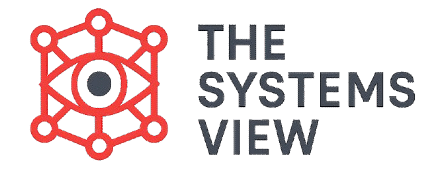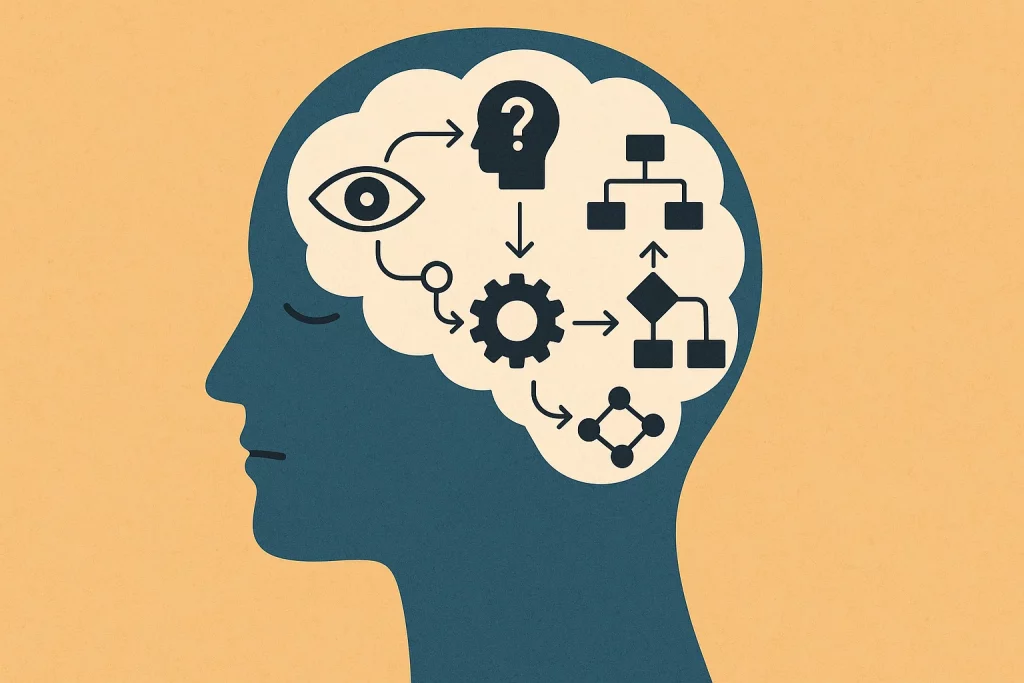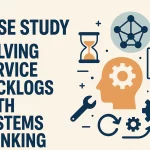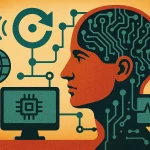We have now learned to see the patterns in a system using Behavior Over Time Graphs (BOTGs) and to map the connections using Causal Loop Diagrams (CLDs). But this leads to a vital question: What keeps a bad system structure in place?
The answer is Mental Models.
A Mental Model is a deeply ingrained set of assumptions, beliefs, and images that we hold about how the world works. They are the hidden rules that guide our actions, choices, and decisions every single day. They are the reason a problem gets fixed and then quickly returns.
In Systems Thinking, we say that the structure of the system—the loops and delays we drew—is created by the mental models of the people running it.
What Exactly Are Mental Models?
Think of your Mental Model as the operating system for your mind. It is a filter you use to interpret everything you see and hear. It is not always true, but you act as if it is.
- The Map, Not the Territory: A mental model is like a map in your head. It shows you the roads you believe exist, but it is never the real territory. When your map is wrong, you keep getting lost.
- An Unconscious Filter: Most of our mental models run unconsciously, meaning we do not even know we have them. They are built over years from our experience, culture, and training.
For example, a manager’s mental model might be: “Employees only work hard when they are watched closely.” This belief will cause the manager to micromanage, which in turn hurts employee trust and creativity. The belief creates the behavior, which creates the system’s outcome.
How Mental Models Drive System Structure
Mental models are the most powerful forces in a system because they guide the design of the structure itself. They turn into concrete things like policies, budgets, and job rules.
Beliefs Create the Loops
Remember the ComputeFast case study? The service backlog kept growing despite the company hiring more staff. Why did the leaders keep hiring?
Their internal Mental Model was likely: “A backlog is a staff problem, and the only solution is to add staff.”
This belief caused them to ignore the actual structure—the broken training loop—and focus only on the simple solution of hiring. They were blind to the true cause because their map told them where the problem should be. Until they changed that belief, the negative loop would have run forever.
Shared Models Become Culture
When a whole group of people holds the same Mental Model, it becomes the organization’s culture. This is called a Shared Mental Model.
If everyone in a company believes that “Asking for help is a sign of weakness,” then no one will speak up when a project is failing. This collective belief creates a system structure where problems are always hidden until it is too late. The system itself becomes secretive.
The Power of Making Them Visible
The greatest leverage point—the best place to make a small change that creates a massive, lasting effect—is in changing the system’s Mental Models.
Why? Because if you change the beliefs people hold, they will naturally design new policies and structures. If you only try to change a policy without changing the belief behind it, the belief will eventually drag the system back to the old, comfortable way of doing things.
Important: In Systems Thinking, the deepest level of change is not found in budgets or rules. The deepest leverage point is in shifting the mindsets and beliefs—the Mental Models—that create the system in the first place.
The Practice of Reflection
Systems Thinking teaches you to constantly check your own map. You must ask questions like:
- “What do I believe is absolutely true about this problem?”
- “If the opposite of my belief were true, how would I act differently?”
- “What assumptions am I making about why the other person failed?”
By challenging your own mind, you open up new possibilities for change. When teams openly compare their different maps of the system, they can build a new, more accurate map together.
Conclusion
A Mental Model is the hidden operating system that guides all behavior in a system. It is the reason we keep seeing the same negative loops and patterns repeat themselves. The true goal of Systems Thinking is not just to draw diagrams, but to use those diagrams to make our unconscious beliefs visible. Once we identify and challenge the fundamental beliefs that create a bad structure, we can change our minds, design a better system, and finally achieve a solution that lasts.



